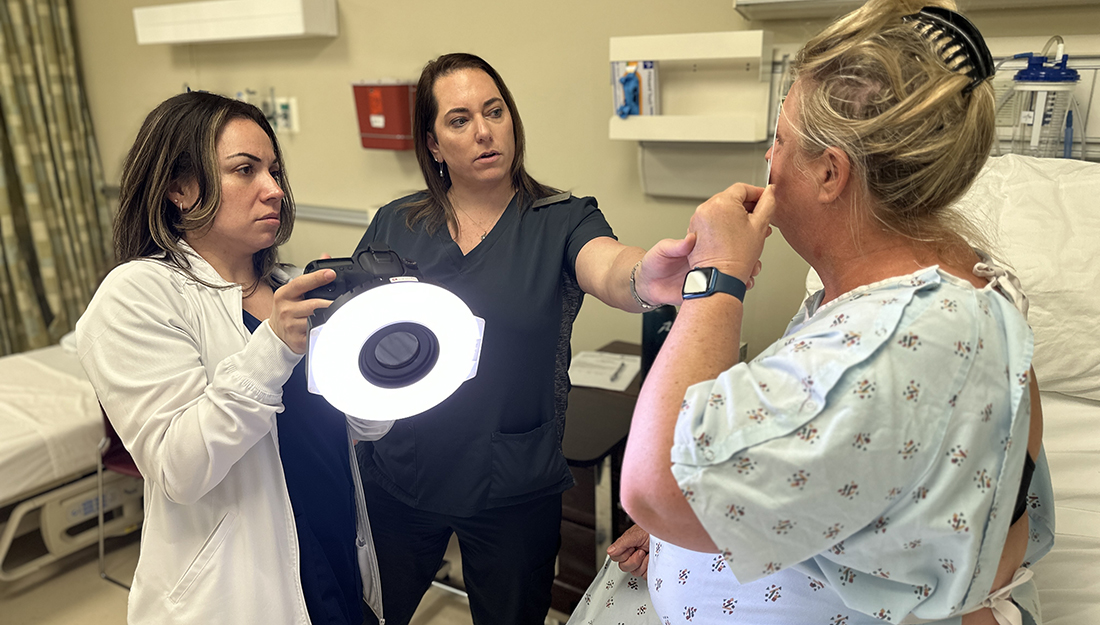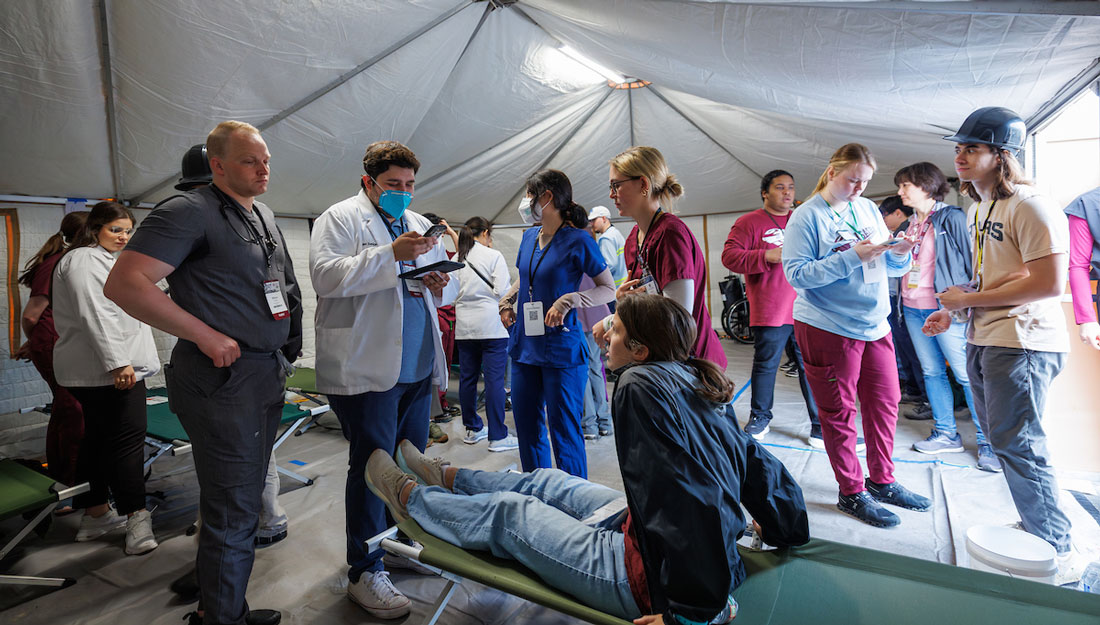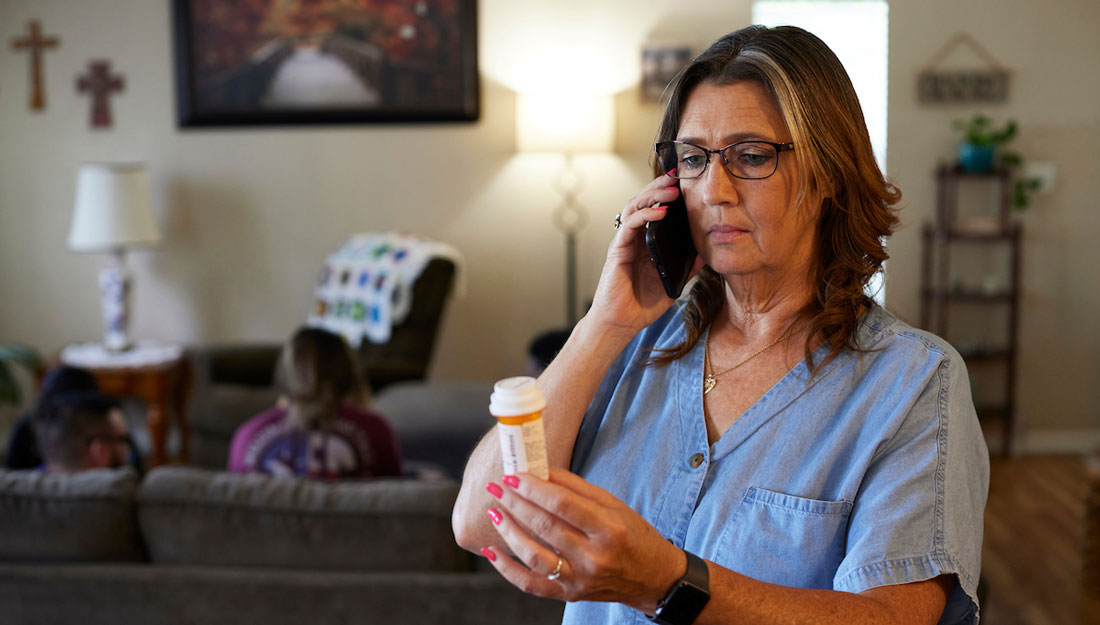HSC receives Coordinating Board approval for new College of Nursing
(COLLEGE STATION, TX) — The Texas A&M Health Science Center will have seven colleges beginning this fall after the Texas Higher Education Coordinating Board gave approval today to establish a College of Nursing for a Bachelor of Science in Nursing degree program.
The THECB approval at its regular quarterly meeting follows prior approval by the Texas A&M University System Board of Regents. The new College in Bryan-College Station initially will offer the B.S.N. beginning later this year.
“We are most pleased to add this very important arena of health professions training,” said Nancy Dickey, M.D., President of the Texas A&M Health Science Center and Vice Chancellor for Health Affairs for the Texas A&M System. “Nurses are key members of the health professions team, and it is appropriate and important that we have the capacity to offer degrees for this group of professionals. With the state facing significant nursing shortages, it is one of our missions to address the shortage.”
The nursing program initially will offer three different “tracks” for the baccalaureate degree. One is a standard generic B.S.N. requiring two years of prerequisite courses and two years of nursing curricula. A second “accelerated” program is for those who already have earned a bachelor’s degree in a related field and need to complete the nursing curriculum and required clinical experiences. The third track is an R.N.-to-B.S.N. program allowing registered nurses with associate degrees to complete additional course work for the B.S.N.
Students in the generic program would complete 122 semester credit hours (SCH) – 58 in general education and 64 in required nursing and clinical courses. Those in the second degree option would complete 25 SCH of nursing prerequisite courses along with the same 64 SCH in required nursing and clinical courses. R.N.-to-B.S.N. participants would complete 25 SCH of nursing prerequisite courses (if not required in the student’s original R.N. program) and 35 SCH of nursing and clinical nursing courses.
“A nurse has a high degree of collaboration with other health care professionals,” said Sharon Wilkerson, Ph.D., R.N., founding dean of the HSC-College of Nursing. “As a part of the Health Science Center, the College of Nursing has a unique potential to nourish and develop quality clinical nursing leaders who develop that understanding of collaboration during their education.”
Projections are 40 B.S.N. full-time students the first year, growing to a total of 250 students in less than 10 years.
“We have, of course, been doing nursing education here since 2005 under the banner of Texas A&M University-Corpus Christi,” Dr. Dickey said. “As we transition to the HSC program, we will be able to expand the numbers, and the training of all health professionals will be benefited by having improved opportunities for interdisciplinary training that include nursing.”
The new HSC-College of Nursing will help alleviate the severe nursing shortage across Texas, compounded by an existing nursing work force that is aging and ready to retire. The THECB agreed increasing the number of registered nurse graduates was so important as to warrant designation as a specific target of success for Closing the Gaps in 2015: The Texas Higher Education Plan.
According to U.S. Bureau of Labor Statistics projections, more than a million new and replacement nurses will be needed to fill vacancies during the next 10 years, and, for the first time, the U.S. Department of Labor has identified registered nursing as the top occupation in terms of growth through the year 2012.
“The United States is in the midst of a nursing shortage that will intensify as the population ages and the need for health care grows,” Dr. Wilkerson said. “Yet, many qualified applicants are turned away from baccalaureate programs due to limited resources in existing nursing programs. We are pleased to be able to open the door for some of those applicants with our new program and to help address the nursing shortage.”
“The societal image is anybody can be a nurse, but that is very wrong,” Dr. Wilkerson continued. “It takes a highly motivated, caring individual with a desire to learn as much as possible to be an excellent nurse. We think those are the individuals that the College of Nursing will attract.”
HSC facilities in College Station supporting nursing education include a 45-person classroom; skills lab with eight hospital beds, nursing station and medication room; and three rooms designed to simulate a hospital environment equipped with computer-programmed manikins.
Approximately 30 faculty and staff members will be hired over the course of the next five years. Long-range plans include nursing graduate programs such as a collaborative doctoral degree with other A&M System nursing programs.
The Texas A&M Health Science Center provides the state with health education, outreach and research. Its six colleges located in communities throughout Texas are Baylor College of Dentistry, the College of Medicine, the Graduate School of Biomedical Sciences, the Institute of Biosciences and Technology, the Irma Lerma Rangel College of Pharmacy, and the School of Rural Public Health.
Media contact: media@tamu.edu


